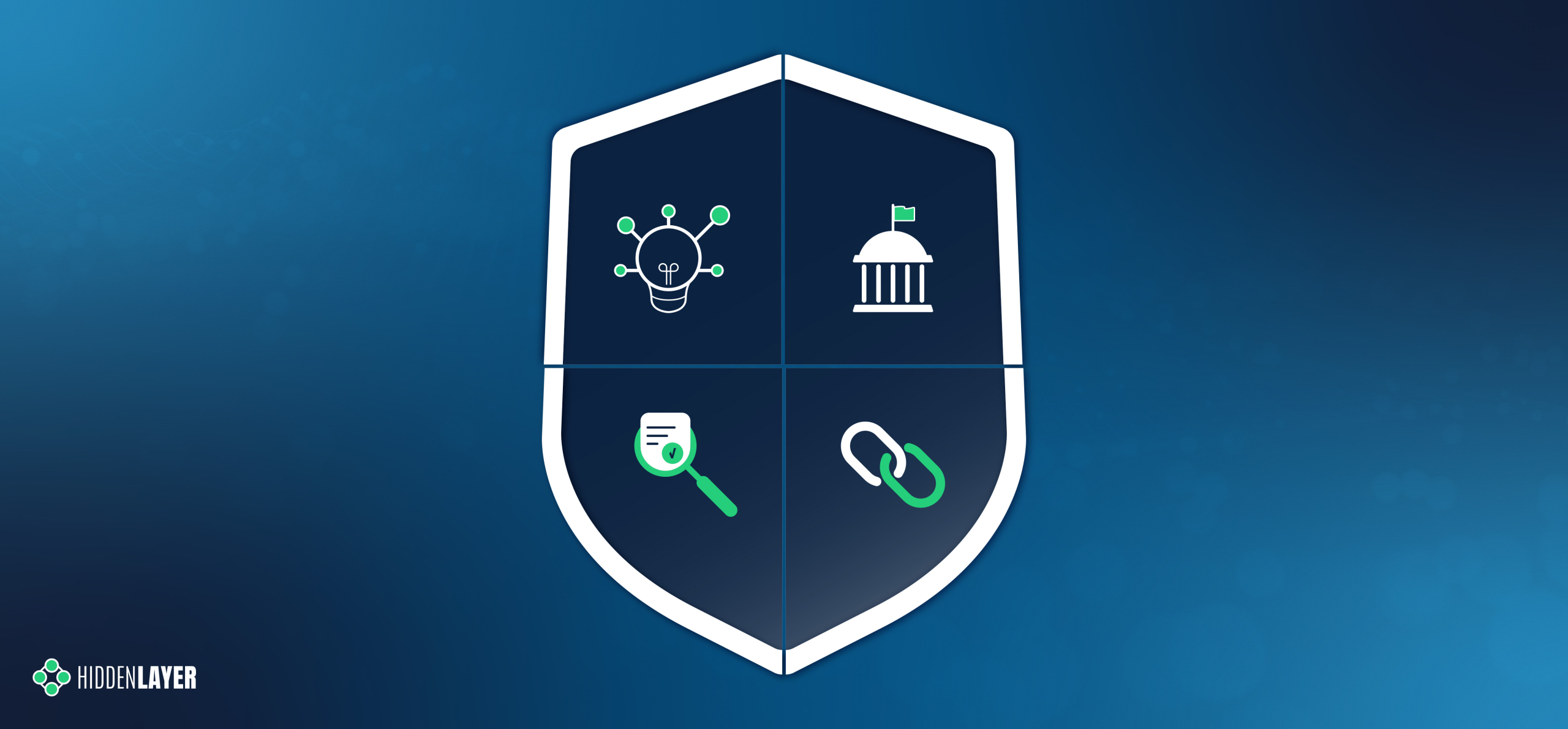On July 29th, 2024, the National Institute of Standards and Technology (NIST) released critical guidance that outlines best practices for managing cybersecurity risks associated with AI models. This guidance directly ties into several comments we submitted during the open comment periods, highlighting areas where HiddenLayer effectively addresses emerging cybersecurity challenges.
Understanding and Mitigating Threat Profiles
Practice 1.2 emphasizes the importance of assessing the impact of various threat profiles on public safety if a malicious actor misuses an AI model. Evaluating how AI models can be exploited to increase the scale, reduce costs, or improve the effectiveness of malicious activities is crucial. HiddenLayer can play a pivotal role here by offering advanced threat modeling and risk assessment tools that enable organizations to identify, quantify, and mitigate the potential harm threat actors could cause using AI models. By providing insights into how these harms can be prevented or managed outside the model context, we help organizations develop robust defensive strategies.
Roadmap for Managing Misuse Risks
Practice 2.2 calls for establishing a roadmap to manage misuse risks, particularly for developing foundation models and future versions. Our services can support organizations in defining clear security goals and implementing necessary safeguards to protect against misuse. We provide a comprehensive security framework that includes the development of security practices tailored to specific AI models, ensuring that organizations can adjust their deployment strategies when misuse risks escalate beyond acceptable levels.
Model Theft and Security Practices
As outlined in Practices 3.1, 3.2, and 3.3, model theft is a significant concern. HiddenLayer offers a suite of security tools designed to protect AI models from theft, including advanced cybersecurity red teaming and penetration testing. Organizations can better protect their intellectual property by assessing the risk of model theft from various threat actors and implementing robust security practices. Our tools are designed to scale security measures in proportion to the model’s risk, ensuring that insider threats and external attacks are effectively mitigated.
Red Teaming and Misuse Detection
In Practice 4.2, NIST emphasizes the importance of using red teams to assess potential misuse. HiddenLayer provides access to teams that specialize in testing AI models in realistic deployment contexts. This helps organizations verify that their models are resilient against potential misuse, ensuring that their security measures are up to industry standards.
Proportional Safeguards and Deployment Decisions
Practices 5.2 and 5.3 focus on implementing safeguards proportionate to the model’s misuse risk and making informed deployment decisions based on those risks. HiddenLayer offers dynamic risk assessment tools that help organizations evaluate whether their safeguards are sufficient before proceeding with deployments. We also provide support in adjusting or delaying deployments until the necessary security measures are in place, minimizing the risk of misuse.
Monitoring for Misuse
Continuous monitoring of distribution channels for evidence of misuse, as recommended in Practice 6.1, is a critical component of AI model security. HiddenLayer provides automated tools that monitor APIs, websites, and other distribution channels for suspicious activity. Integrating these tools into an organization’s security infrastructure enables real-time detection and response to potential misuse, ensuring that malicious activities are identified and addressed promptly.
Transparency and Accountability
In line with Practice 7.1, we advocate for transparency in managing misuse risks. HiddenLayer enables organizations to publish detailed transparency reports that include key information about the safeguards in place for AI models. By sharing methodologies, evaluation results, and data relevant to assessing misuse risk, organizations can demonstrate their commitment to responsible AI deployment and build trust with stakeholders.
Governance and Risk Management in AI
NIST’s guidance also includes comprehensive recommendations on governance, as outlined in GOVERN Practices 1.2 to 6.2. HiddenLayer supports the integration of trustworthy AI characteristics into organizational policies and risk management processes. We help organizations establish clear policies for monitoring and reviewing AI systems, managing third-party risks, and ensuring compliance with legal and regulatory requirements.
Adversarial Testing and Risk Assessment
Regular adversarial testing and risk assessment, as discussed in MAP Practices 2.3 to 5.1, are essential for identifying vulnerabilities in AI systems. HiddenLayer provides tools for adversarial role-playing exercises, red teaming, and chaos testing, helping organizations identify and address potential failure modes and threats before they can be exploited.
Measuring and Managing AI Risks
The MEASURE and MANAGE practices emphasize the need to evaluate AI system security, resilience, and privacy risks continuously. HiddenLayer offers a comprehensive suite of tools for measuring AI risks, including content provenance analysis, security metrics, and privacy risk assessments. By integrating these tools into their operations, organizations can ensure that their AI systems remain secure, reliable, and compliant with industry standards.
Conclusion
NIST’s July 2024 guidance underscores the critical importance of robust cybersecurity practices in AI model development and deployment. HiddenLayer and its services are uniquely positioned to help organizations navigate these challenges, offering advanced tools and expertise to manage misuse risks, protect against model theft, and ensure the security and integrity of AI systems. By aligning with NIST’s recommendations, we empower organizations to deploy AI responsibly, safeguarding both their intellectual property and the public’s trust.




